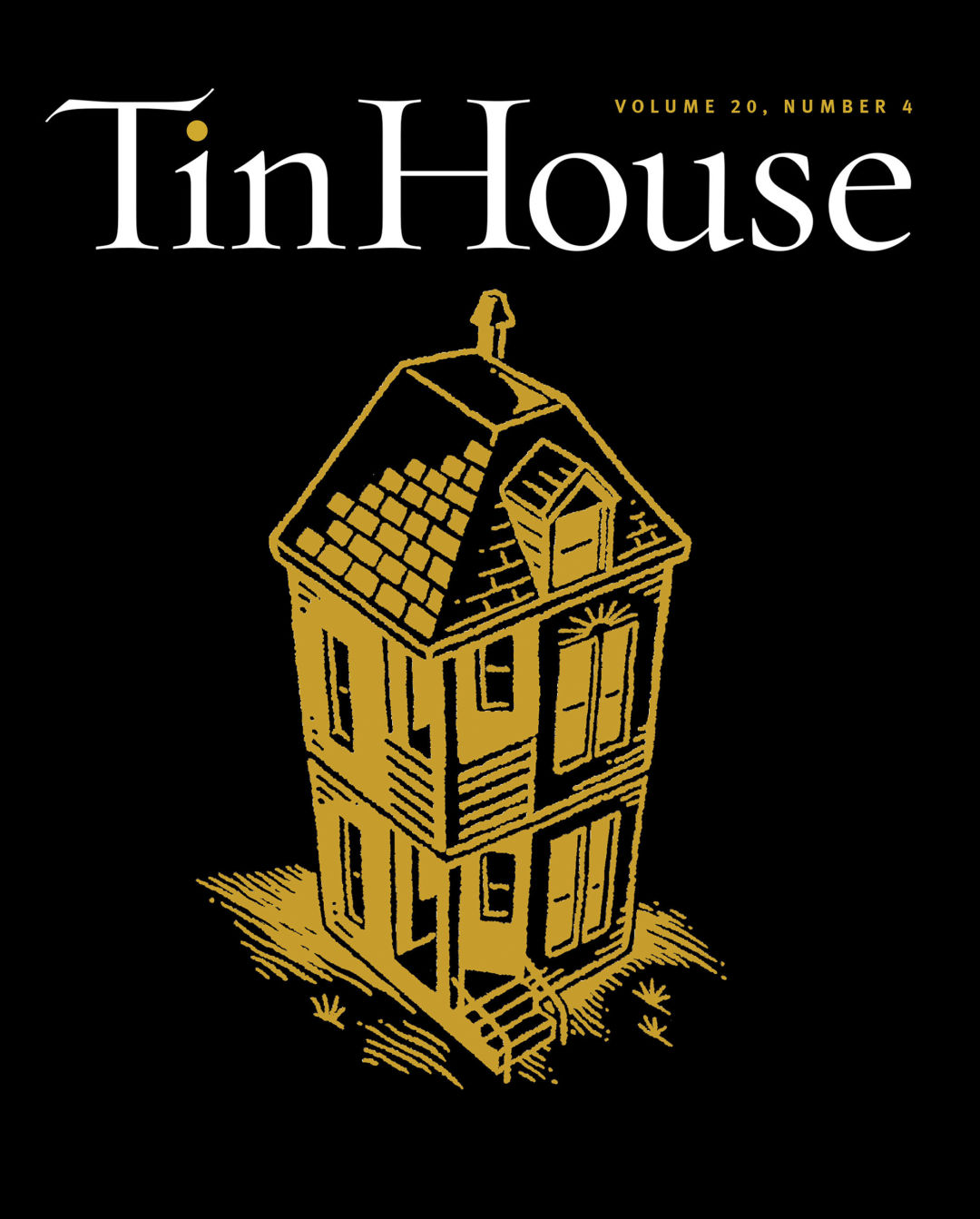How Tin House Changed the Game for Portland Writers

Tin House's final issue, released in June
Image: Courtesy Tin House
Joni Renee Whitworth has performed with legendary performance artist Marina Abramović, but only one professional accomplishment has ever led to crying on the internet. On August 29, Whitworth posted a tear-streaked video to Facebook: “I got a really cool email today.” After submitting a manuscript in June, they were accepted to Tin House’s 2019 Young Adult Fiction Workshop, where emerging writers of YA fiction hole up for a long autumn weekend at Newport’s literary-themed Sylvia Hotel.
“Growing up in rural Oregon, it was a cultural lifeline,” says Whitworth of the long-running literary magazine put out by Tin House, at once a scrappy indie publisher and Portland’s own literary lodestone. The company turned 20 this year, and it’s in a state of flux to rival the city that birthed it.
Founded by local publishing magnate Win McCormack in 1999 with editors Holly MacArthur, Elissa Schappell, and Rob Spillman, Tin House began as a paradigm-busting lit mag with operations in Portland and New York. “At the time, literary magazines had this attitude that they were supposed to be like castor oil,” Spillman says. “Take two tablespoons of this and you’ll get a tote bag.” Tin House aimed to be edgier, funnier, and more political than your typical Paris Review (where Schappell was a senior editor), with a focus on layout design and new work from diverse voices.
Whitworth picked up their first copy as a queer teenager at McMinnville’s Third Street Books. “To even have one poem that was a tiny bit queer was like, ‘Whoa.’ It was shocking to me, but it didn’t feel like they were publishing it to be shocking.”
“It was always a very catholic mix of stuff,” says Jon Raymond, a writer and former associate editor of the magazine who’s best known for collaborations with filmmaker Kelly Reichardt like Wendy and Lucy and Night Moves. Raymond was raised in Lake Oswego and spent most of the ’80s and ’90s in Portland’s “punky music and art world,” as he puts it. “In the ’90s, you knew Chuck Palahniuk was around, you knew Katherine Dunn was around, you knew Ken Kesey had once been alive and roaming,” Raymond says, but there wasn’t much of a centralized literary scene. Tin House changed that.
With one foot in Portland and another in NYC, the magazine established a link between our atomized writing community and the publishing capital of the world. Local voices appeared alongside Nobel and Pulitzer winners like Seamus Heaney and Marilynne Robinson. In the summer of 2003, Tin House launched a writers’ workshop at Reed College, whose free public readings started attracting literary supernovas—Whitworth described the most recent lineup as “ridiculously stacked” with “like, every famous writer in fucking all of America.” In 2002, Tin House started publishing books as a subsidiary of Bloomsbury, eventually growing into an independent press. Other PacNW quarterlies like Glimmer Train were publishing similar material, but none covered as much ground as Tin House did.
“It seemed like a conversation was happening within the pages that I wanted to be a part of,” says Lance Cleland, a former Tin House intern. “The fact that it was here, in my backyard, was really exciting.” Cleland was working as a book buyer at Powell’s on Hawthorne in 2009 when he first heard about the magazine; after seven years as an assistant editor, he’s now the director of workshops.
Each Tin House included a “New Voices” section, which ran work by previously unpublished authors. For the magazine’s second issue, newcomer Jean Nathan wrote a story called “The Secret Life of the Lonely Doll” that scored her an immediate book deal from a legendary New York agent. Tin House has also worked closely with rising stars like Hanif Abdurraqib and Kristen Arnett—Arnett’s novel Mostly Dead Things recently became the press’s first New York Times best seller. They didn’t always get it right, of course: most notoriously, the magazine passed on Kristen Roupenian’s short story “Cat Person,” which went gangbusters-viral after the New Yorker published it in December 2017. (Spillman still has thoughts about the ending.)
In June, just two months after its 20th anniversary, Tin House published its final issue, citing “multiple factors.” There’s the obvious financial component: literary magazines rarely make money, and McCormack’s attention has migrated toward the New Republic since he purchased it in 2016. Another, more ominous ghost hangs over the decision: the 2018 summer workshop made national headlines after writer Wells Tower read his essay “Own Goal,” first published in a 2010 issue of Harper’s, which featured violent, misogynistic language that caused multiple attendees to flee on the spot. Outlets like OPB and the New York Times’s Still Processing podcast ran pieces about the uproar and posed questions about the finer details of running a truly inclusive institution.
With the print magazine gone (some original content still runs online), Tin House is doubling down on its other operations. It recently upped its book publication schedule to 18 titles per year, and Cleland says there are plans to launch new workshops and expand the scholarship program—Tin House already offers workshop scholarships for previously incarcerated writers and people born outside the US, and there are plans to establish one for Oregon residents.
“I like having [local] institutions that are fomenting culture, and in some ways it’s incredible that a town like Portland ever had a literary magazine like Tin House,” Raymond says, though he decries an ending that he sees as premature. “A 20-year run is pretty good, but it seems like it could’ve gone even farther.”
Whitworth provides a deeply millennial perspective. “Some people were really devastated about the magazine decision, but I don’t feel that way at all. I think it was in service of delivering on their mission even harder,” they say. “I don’t need a product. I’ll just read the content on my phone, but being able to meet these amazing writers is irreplaceable.”




